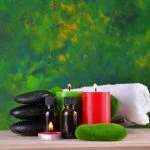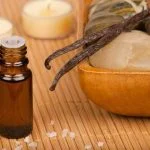Are you wondering how much aromatherapy costs and whether it fits into your budget? Aromatherapy has become increasingly popular in the modern world, with many people seeking natural remedies for physical and mental well-being. This article will explore the cost factors of aromatherapy, including essential oils, accessories, professional services, and DIY practices. Whether you’re a beginner or a seasoned aromatherapy enthusiast, understanding the cost can help you make informed decisions about incorporating this practice into your lifestyle.
Aromatherapy is a holistic healing treatment that uses natural plant extracts to promote health and well-being. From stress relief and improved sleep to pain management and mood enhancement, aromatherapy offers a wide range of physical and mental health benefits. As its popularity continues to grow, many individuals are curious about the cost associated with practicing aromatherapy and whether it aligns with their wellness goals.
In this article, we’ll discuss not only the cost of essential oils but also the various methods of aromatherapy, additional accessories needed for practice, professional services available, and tips for budget-friendly DIY practices. Whether you’re interested in using aroma diffusers at home or indulging in professional spa treatments, understanding how much aromatherapy costs can help you make informed choices about integrating this practice into your lifestyle.
Keep reading to learn more about the cost factors of aromatherapy and how to explore this ancient healing art within your budget.
The Benefits of Aromatherapy
Aromatherapy has gained significant popularity in recent years as a natural and holistic approach to promoting physical and mental well-being. The use of essential oils for therapeutic purposes has been embraced by many individuals seeking alternative remedies for various health concerns. Aromatherapy has been found to offer numerous benefits, including stress relief, improved sleep, and pain management.
Stress Relief
One of the most well-known benefits of aromatherapy is its ability to alleviate stress and anxiety. Certain essential oils have calming properties that can help relax the mind and body, reducing the impact of daily stressors on overall well-being. Oils such as lavender, chamomile, and jasmine are commonly used for their stress-relieving effects. Incorporating these essential oils into aromatherapy practices can provide a sense of calm and relaxation, aiding in stress management.
Improved Sleep
Another significant benefit of aromatherapy is its potential to improve sleep quality. Many people struggle with insomnia or other sleep disturbances, and aromatherapy offers a natural approach to promoting relaxation before bedtime. Essential oils like lavender, cedarwood, and bergamot are known for their sedative effects, which can help create a peaceful environment conducive to restful sleep. By incorporating these oils into a bedtime routine through methods such as diffusing or topical application, individuals may experience improved sleep patterns over time.
Pain Management
In addition to promoting relaxation and better sleep, aromatherapy can also be beneficial for managing pain. Some essential oils possess analgesic properties that can help reduce discomfort from headaches, muscle aches, and other forms of physical pain.
Oils such as peppermint, eucalyptus, and rosemary have been used for their pain-relieving effects when applied topically or used in massage therapy. Incorporating these oils into an aromatherapy routine may offer relief from minor aches and pains without the need for pharmaceutical interventions.
These various benefits demonstrate how aromatherapy can positively impact both physical and mental health without significant cost implications. Understanding the potential advantages of aromatherapy can encourage individuals to explore this practice as an accessible means of achieving overall well-being within their budget.
Different Aromatherapy Methods
Aromatherapy can be practiced in various ways, each providing unique benefits for physical and mental well-being. Here are the different methods of practicing aromatherapy:
1. Diffusers: A common method of practicing aromatherapy, diffusers are devices that disperse essential oils into the air. There are several types of diffusers available, including ultrasonic diffusers, nebulizing diffusers, and heat diffusers. The cost of a diffuser can range from $20 to $100 depending on the type and brand.
2. Topical Application: Another popular method is applying essential oils directly to the skin through massage or topical application. This method allows for direct absorption of the oils into the body, providing targeted relief for sore muscles, headaches, and other physical ailments. The cost of essential oils for topical application varies depending on the type and quality of the oil.
3. Inhalation: Inhaling essential oils is a quick and effective way to experience their therapeutic benefits. This method can be achieved by adding a few drops of oil to hot water for steam inhalation or using a personal inhaler. The cost of personal inhalers or steam inhalation accessories is relatively low compared to other aromatherapy methods.
When considering how much aromatherapy costs, it’s important to factor in the expenses associated with each method of practice. From purchasing essential oils to investing in diffusers or additional accessories, individuals have various options for incorporating aromatherapy into their daily routines based on their budget and preferences.
The Cost of Essential Oils
When considering the cost of essential oils for aromatherapy, it’s important to understand the factors that can influence their prices. The average price of essential oils varies depending on the type of oil and its rarity. For example, common essential oils such as lavender and eucalyptus are generally more affordable, while rare oils like helichrysum or rosewood can be quite expensive due to their limited availability.
The production methods used to extract essential oils also play a significant role in determining their cost. Essential oils can be extracted through processes such as steam distillation, cold pressing, or solvent extraction. Each method has its own associated costs, which can impact the final price of the oil. Additionally, some companies may use organic and sustainable practices in their production, resulting in higher prices for their essential oils.
In general, the average price range for essential oils can vary from as low as $5 for common oils to over $100 for rare or specialty oils. It’s important for consumers to consider both the quality and the price when purchasing essential oils for aromatherapy to ensure that they are getting a product that meets their needs without overspending.
| Essential Oil | Average Price Range |
|---|---|
| Lavender | $7 – $15 |
| Eucalyptus | $5 – $10 |
| Helichrysum | $80 – $100 |
| Rosewood | $50 – $120 |
Aromatherapy Accessories
When practicing aromatherapy, there are various accessories that are essential for a successful and enjoyable experience. These accessories are not only necessary for the proper use of essential oils but can also enhance the overall aromatherapy experience. From diffusers to storage containers and carrier oils, these accessories play a crucial role in ensuring that the therapeutic benefits of essential oils are fully utilized.
Diffusers
One of the most popular accessories for aromatherapy is a diffuser. Diffusers are devices that help to disperse essential oils into the air, allowing their aroma to fill the room. There are several types of diffusers available, including ultrasonic diffusers, nebulizing diffusers, and heat diffusers. Each type has its own unique method of dispersing essential oils, with varying costs and levels of effectiveness.
Storage Containers
Proper storage of essential oils is crucial in maintaining their potency and maximizing their shelf life. Dark glass bottles are typically used to store essential oils as they help protect them from light exposure which can cause them to deteriorate more quickly. Additionally, storing essential oils in a cool, dark place can help extend their lifespan.
Carrier Oils
Carrier oils are often used to dilute essential oils before applying them to the skin during topical aromatherapy practices. Common carrier oils include jojoba oil, coconut oil, almond oil, and olive oil. These carrier oils not only dilute the essential oil but also help to nourish and moisturize the skin when combined with essential oils.
Overall, while it is important to consider how much aromatherapy cost may be when purchasing these accessories, they are crucial for a successful aromatherapy practice and can greatly enhance the overall experience.
Professional Aromatherapy Services
When seeking professional aromatherapy services, there are various options available such as massages, facials, and spa treatments. These services provide a luxurious and relaxing experience, utilizing the power of essential oils to promote overall well-being. However, it’s important to consider the cost associated with these professional services and how they fit into your budget.
Professional aromatherapy massages are a popular choice for those seeking relaxation and stress relief. The use of essential oils during a massage can enhance the therapeutic benefits and elevate the overall experience. On average, the cost of an aromatherapy massage can range from $50 to $150 per session, depending on factors such as location, therapist expertise, and the quality of essential oils used.
Facials incorporating aromatherapy techniques have also gained popularity in recent years. Aromatherapy facials typically involve the use of essential oils suited for specific skin types and concerns, providing hydration, rejuvenation, and overall skin health. The cost of an aromatherapy facial can vary widely, ranging from $75 to $200 or more per session based on the spa’s location and reputation.
For those looking for a complete sensory experience, spa treatments that integrate aromatherapy can be an indulgent option. From aromatic steam rooms to scented body wraps, these treatments offer holistic relaxation for both mind and body. The cost of aromatherapy spa treatments will depend on the specific services offered by each spa but can generally range from $100 to $300 or more per visit.
Incorporating professional aromatherapy services into your self-care routine can contribute to improved mental and physical well-being. Before scheduling any professional service it is important to do some research about standard prices since knowing how much aromatherayp costs could help you plan accordingly within your budget. Whether it is through massages, facials or spa treatments if chosen wisely you will get a great return on investment on health benefits obtained after each treatment.
DIY Aromatherapy
When it comes to aromatherapy, there are budget-friendly options that allow you to practice this ancient art at home without breaking the bank. One of the easiest and most cost-effective ways to enjoy the benefits of aromatherapy is by making your own essential oil blends. By purchasing a few key essential oils and carrier oils, you can create custom blends that suit your specific needs, whether it’s for relaxation, focus, or energy.
Creating homemade aromatherapy products is another budget-friendly option for enjoying the benefits of essential oils. For example, you can make your own massage oils, body scrubs, or bath salts using essential oils and simple ingredients that are often found in your kitchen or local grocery store. Not only does this give you complete control over the scents and ingredients you’re using, but it also saves you money in the long run compared to purchasing pre-made aromatherapy products.
If you are considering DIY aromatherapy, it’s important to invest in high-quality essential oils as these will be the primary tools in your arsenal. While there might be cheaper options available on the market, lower-quality oils may not provide the same therapeutic benefits and could potentially contain harmful additives. It’s important to consult with a professional or do thorough research before starting your journey into DIY aromatherapy.
| DIY Aromatherapy Tips | Cost-Saving Benefits |
|---|---|
| Make Your Own Essential Oil Blends | Customize scents based on personal needs without buying multiple pre-made blends. |
| Create Homemade Aromatherapy Products | Save money on store-bought products while knowing exactly what ingredients are being used. |
Conclusion
In conclusion, aromatherapy is a popular and beneficial practice that offers a range of physical and mental health benefits. While the cost of aromatherapy can vary depending on the methods and products used, it is important to note that there are options for every budget.
Essential oils, the cornerstone of aromatherapy, come in a wide price range, with factors such as rarity and production methods influencing their cost. Additionally, there are various accessories and professional services available for those interested in exploring aromatherapy further.
When considering how much aromatherapy cost, it’s essential to remember that there are budget-friendly options for practicing this therapeutic art at home. DIY aromatherapy allows individuals to create their own essential oil blends and homemade products, offering an affordable way to experience the benefits of aromatherapy. Furthermore, exploring different methods such as topical application and inhalation can also provide cost-effective alternatives to professional services.
Ultimately, the practice of aromatherapy can be tailored to fit individual budgets and preferences. Whether it’s investing in high-quality essential oils or opting for DIY techniques, there are various ways to incorporate aromatherapy into your life without breaking the bank. By understanding the various cost factors involved in aromatherapy and exploring different options within your budget, you can experience the numerous benefits of this holistic practice without financial strain.

Are you looking for a natural way to improve your health and wellbeing?
If so, aromatherapy may be the answer for you.





